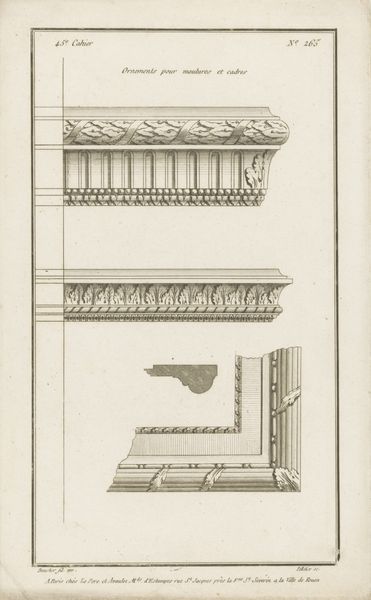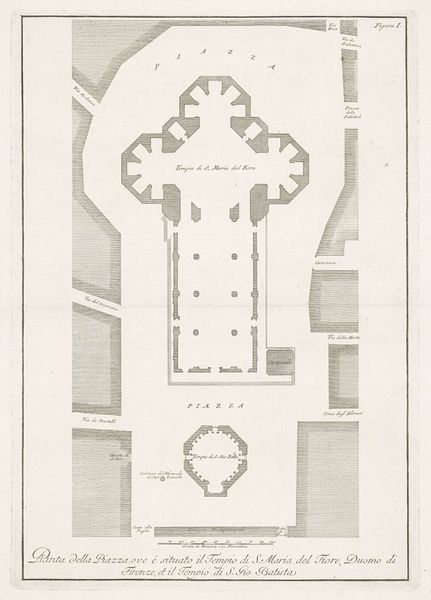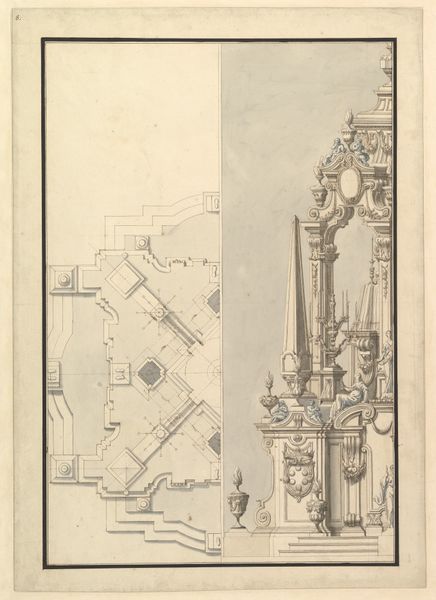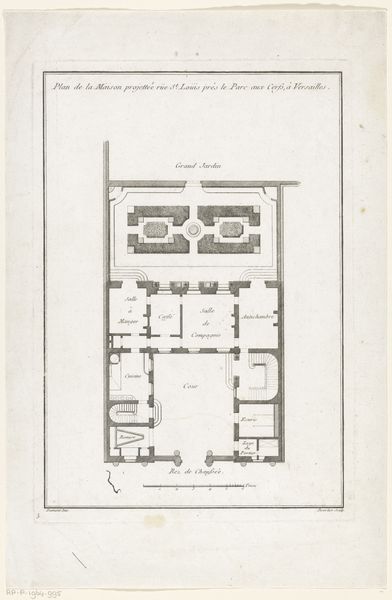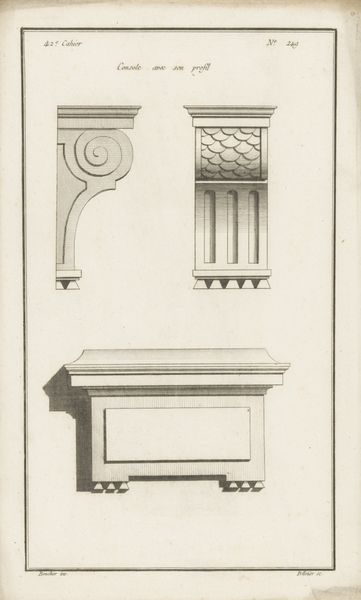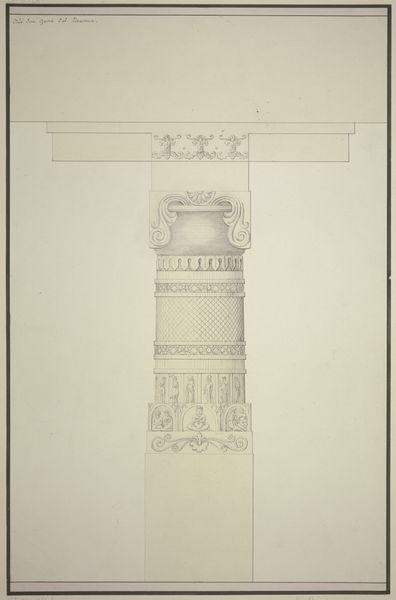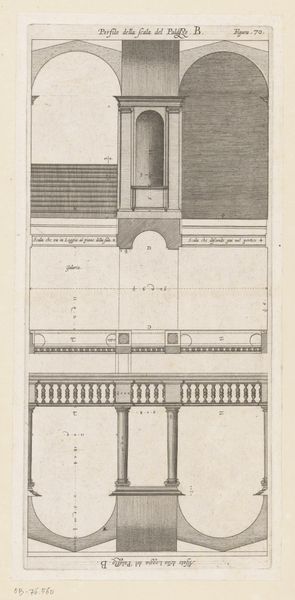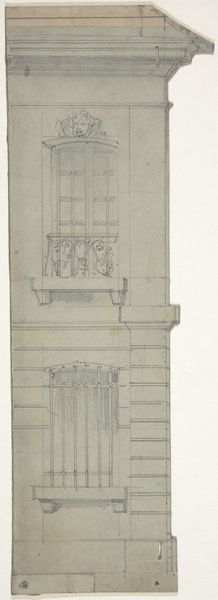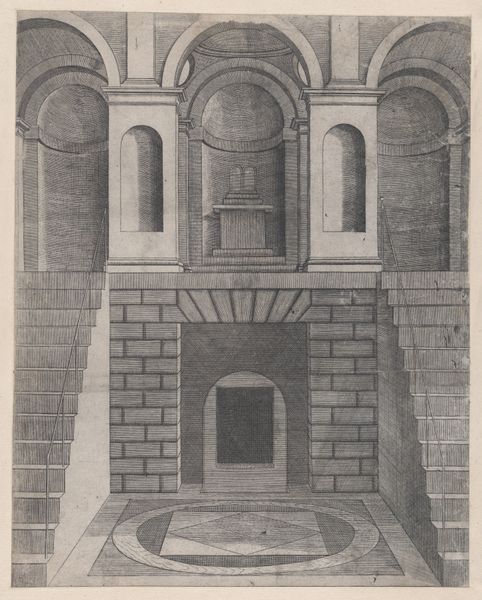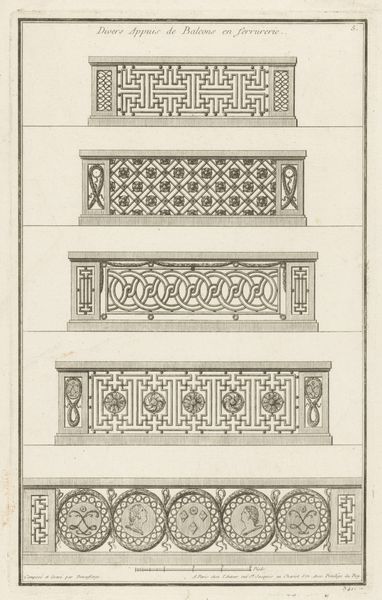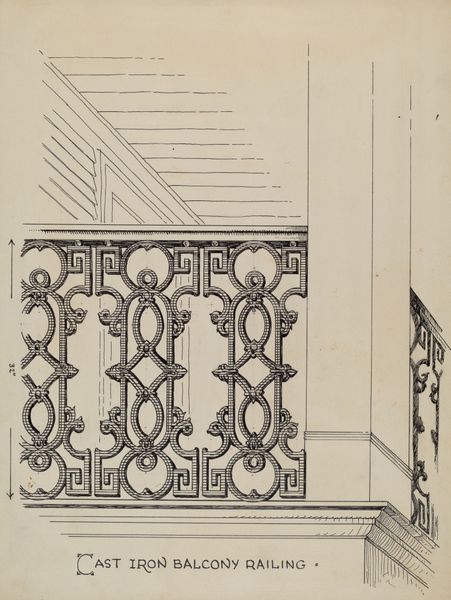
drawing, print, pencil, architecture
#
architectural sketch
#
drawing
#
aged paper
#
homemade paper
# print
#
old engraving style
#
architectural plan
#
old-timey
#
geometric
#
pencil
#
architectural section drawing
#
architectural drawing
#
architecture drawing
#
architectural proposal
#
architecture
Dimensions: height 124 mm, width 72 mm
Copyright: Rijks Museum: Open Domain
Editor: Here we have what appears to be a drawing or perhaps a print, titled "Detail van de gevel van het huis Hof van Holland in Haarlem," dating somewhere between 1862 and 1917. There's a stark, almost clinical precision to it. The depiction is focused on architectural details, making it look like a technical blueprint. What can you tell us about the socio-cultural context of such detailed architectural drawings? Curator: It's crucial to remember that architectural drawings like these were more than just blueprints; they were powerful tools of social aspiration and civic identity. The late 19th century witnessed a surge in urban development, often fueled by a desire to emulate classical grandeur. Detail, as you observed, was critical. This level of precise representation wasn't simply for construction. Editor: So, it was about making a statement? Curator: Absolutely. Buildings were designed not just for utility, but as visual symbols of power and progress. A meticulously rendered facade detail communicated refinement, stability, and historical legitimacy. Consider, for instance, how these drawings might have been presented to city officials or potential investors. Would they perceive this level of detailing as a sign of trustworthiness or excessive opulence? Editor: It sounds like architectural drawings were very influential then in communicating certain societal values, right? I never thought of it that way! Curator: Precisely! And the style, choice of materials presented, even the scale of ornamentation all contributed to a narrative that helped shape public perception. How do you see this kind of technical rendering fitting into the larger narrative of Dutch identity and civic pride during this period? Editor: I'm seeing it as part of this broader aspiration towards progress and modernization, but perhaps rooted in a desire to preserve historical legacy, or even assert dominance through construction and development. Thank you!
Comments
No comments
Be the first to comment and join the conversation on the ultimate creative platform.
